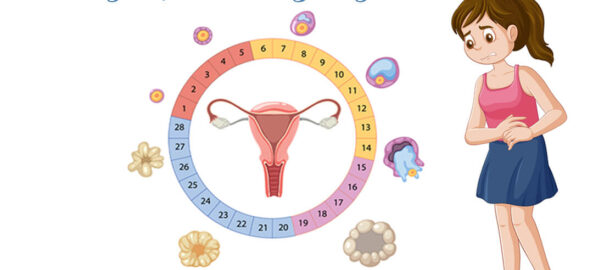
Vaginal discharge is a natural and healthy occurrence in women that helps maintain the reproductive system’s cleanliness. However, not all types of discharge are created equal, and understanding their differences is crucial for your health. From clear and odourless to thick and cloudy, vaginal discharge can vary in consistency, colour, and smell. In this comprehensive guide, we’ll unpack the different types of vaginal discharge, what they mean, and when to seek best medicine for white discharge. Whether experiencing abnormal discharge or simply curious about your body’s natural functions, this guide will provide the knowledge you need to keep your body healthy and thriving.
What is Normal Vaginal Discharge?
Normal vaginal discharge is common among women and is typically clear or milky in colour with a mild odour. This discharge can vary in consistency and amount depending on the stage of your menstrual cycle. During ovulation, the release may be more abundant and have a thinner texture, while it may be thicker and more noticeable during other steps. However, if you notice any changes in your vaginal discharge, it may indicate an infection or other medical problem. Women can go to the best medicine for white discharge to treat the underlying cause of the abnormal discharge.
Additionally, it is important to note that certain types of vaginal discharge can signal a potential health issue. For example, excessive or abnormal discharge accompanied by itching, burning, or a foul odour could indicate an infection such as bacterial vaginosis, yeast infection, or sexually transmitted disease. Ayurveda provides various natural solutions that can assist in controlling abnormal discharge while also supporting the overall health of the vagina. Maintaining good hygiene practices and paying attention to changes in release is essential to ensure optimal reproductive and sexual health.
Abnormal Vaginal Discharge Symptoms and Causes
Abnormal vaginal discharge is a common issue many women face, and it can be a sign of an underlying medical condition. There are various types of vaginal discharge, and it is important to understand them to determine whether they are normal. A normal healthy white discharge is clear or whitish, has a mild odour, and does not cause any itching or irritation.
If you experience, abnormal vaginal discharge could indicate an underlying issue such as an infection or other health condition. Here are some common symptoms and causes of abnormal vaginal discharge:
Symptoms:
- Colour change: Discharge that is white, yellowish, greenish, or greyish.
- Unpleasant odour: Strong, foul-smelling discharge with a fishy or rotten smell.
- Texture and consistency: Thick, clumpy, or curd-like discharge.
- Itching or irritation: Discomfort or itching in the vaginal area.
- Burning sensation: Feeling a sense of burning while urinating accompanied by discharge.
- Swelling or redness: There may be inflammation or redness present in the vaginal area.
Causes:
- Bacterial Vaginosis (BV): An excess of bacteria in the vagina can lead to a noticeable scent resembling fish and a discharge with a greyish tint. It is the most common cause of abnormal discharge.
- Yeast Infection: Overgrowth of Candida fungus, leading to white, thick discharge and itching. It may also cause redness and swelling.
- Sexually Transmitted Infections (STIs): STIs like gonorrhoea, chlamydia, or trichomoniasis can cause changes in vaginal discharge, including odour, colour, and consistency.
- Vaginal Atrophy: Thinning and inflammation of vaginal tissues due to reduced estrogen levels, commonly occurring during menopause, can lead to abnormal discharge.
- Pelvic Inflammatory Disease (PID) is a health issue that specifically impacts the reproductive organs. Sexually transmitted infections (STIs) that go untreated are frequently the root cause. The symptoms of PID include abnormal discharge, lower abdominal pain, and fever.
- Allergic Reactions: Allergies to certain soaps, detergents, or materials in clothing or condoms can cause irritation and abnormal discharge.
- Hormonal Changes: Changes in hormone levels, like those experienced during pregnancy or while using hormonal contraceptives, can impact the amount and consistency of vaginal discharge.
After that, it is important to take cautionary measures to prevent and treat abnormal vaginal discharge. Recognizing the different types of vaginal discharge and their associated causes can aid in maintaining female reproductive health. It can show great success with the best medicine for white discharge.
Different Types of Vaginal Discharge
Vaginal discharge is a normal and necessary process in women to maintain the cleanliness and health of the vagina. The colour, texture, and quantity of discharge can differ depending on the menstrual cycle, age, and infection. The discharge can range from clear to yellow, white, or green and may be thin or thick in consistency. During ovulation or pregnancy, the discharge may increase in amount and become more elastic. It could indicate an infection if you experience discharge, itching, burning, or a foul odour.
Here are some common types of vaginal discharge:
- Clear and Watery: This types of white discharge is usually thin, clear, and odourless. It is most common during the middle of the menstrual cycle when ovulation occurs.
- White and Thick: White or off-white discharge with a thick consistency is normal, especially during different menstrual cycle phases. It can be creamy or sticky in texture.
- Milky or Cottage Cheese-like: A thick, white, and clumpy discharge resembling cottage cheese is often associated with a yeast infection caused by an overgrowth of the Candida fungus; it can cause itching, redness, and swelling.
- Egg White: This type of discharge resembles raw egg whites in appearance and texture. It is typically stretchy and slippery. Egg white discharge is associated with the fertile window, indicating that ovulation is nearby.
- Yellow or Green: The appearance of yellow or green discharge might signal an infection, possibly bacterial vaginosis or trichomoniasis, which could lead to discomfort due to disagreeable odour, itching, or irritation.
- Greyish and fishy: A greyish discharge with a fishy odour is often a sign of bacterial vaginosis (BV). It occurs due to an imbalance in the vaginal bacteria. It is important to seek medicine of white discharge for proper diagnosis and treatment.
- Pink, Red or Brown: Pink discharge is commonly a spotting or a small amount of blood that can occur just before your period or even mid-cycle during ovulation or in the days leading up to menstruation. Red or Brown discharge occurs at the beginning or end of a menstrual period.
A healthy vaginal discharge is an important aspect of a woman’s reproductive health, and paying attention to changes in colour, texture, and odour, along with vaginal discharge medicine, can help ensure overall well-being.
Tips for Understanding and Managing Your White Discharge
Understanding and managing your white discharge can help you maintain vaginal health and identify potential issues. Here are some tips to help you better understand and manage your release:
- Practice Good Hygiene: For optimal hygiene, it is advised to clean the external genital area using mild, unscented soap and warm water. Avoid harsh soaps, douches, or feminine hygiene products, as they can infect the natural balance of vaginal flora.
- Wear Breathable Underwear: Choose cotton underwear that promotes air circulation and keeps the genital area dry. To prevent bacterial growth, it’s advised to skip tight or synthetic clothing that traps moisture, favoring breathable options.
- Use Protection During Sexual Activity: By making condoms an integral part of your sexual routine, you can effectively lower the risk of acquiring sexually transmitted infections (STIs) that might impact vaginal discharge.
- Monitor Changes: Pay attention to any significant changes in your discharge, such as a sudden increase in volume, changes in colour, consistency, or odour.
- Maintaining a Healthy Lifestyle: A nutritious lifestyle is essential for preserving vaginal well-being. This involves hydration, balanced diet with fruits and veggies, stress management, and regular physical activity to maintain well-being.
- Practice Stress Management: Chronic stress can weaken the immune system and contribute to imbalances in the body. Participate in activities that reduce stress, such as yoga, meditation, deep breathing exercises, or hobbies that promote relaxation.
- Avoid Excessive Vaginal Douching: It is important to note that douching is not necessary and can cause harm to the natural balance of white discharge. The vagina has a self-cleaning mechanism that can maintain its own cleanliness. By douching, one may increase the likelihood of developing infections. Avoiding this practice altogether and trusting the body’s natural abilities is best.
Conclusion
Vaginal discharge is a natural and important part of the female reproductive system but can also indicate potential health concerns. By understanding the various types of white discharge and what they signify, women can better monitor their vaginal health and seek best ayurvedic medicine for white discharge when necessary. From clear and odourless to thick and cloudy, every woman’s body is unique, and it’s important to pay attention to changes in discharge consistency, colour, and smell. This comprehensive guide empowers women with the knowledge to take control of their reproductive health and ensure their bodies are thriving.
Maintaining good personal hygiene, wearing breathable clothing, and avoiding irritants are recommended to minimize the risk of abnormal discharge. Women can proactively manage reproductive health, reduce complexities by monitoring vaginal discharge changes, and following these tips for guidance. Remember, a little awareness can go a long way in ensuring a healthy and comfortable life.










